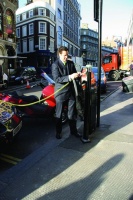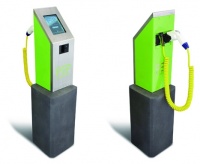Plugging the gap
Plans to address the issues around electric-vehicle charging could inspire more people to adopt their use. David Fowler reports

It is widely accepted that a barrier to the uptake of electric cars is the lack of a readily accessible network of chargers. If the only place to charge up is at home, it will severely limit how far a private motorist is confident of driving.
Another limitation is the speed of charging. A full charge of an exhausted battery takes six to eight hours, something quite difficult for drivers used to filing up with petrol in five minutes to get used to.

The main factors constraining speed are the electricity supply infrastructure and battery characteristics. Fast charging of electric vehicles – such as luggage trucks at airports – is routine in industrial settings.
However, the scale of the problem of achieving filling station rates of recharge is illustrated if you consider that the effective rate of energy transfer in filling a tank with diesel in three minutes is 10MW. The biggest current wind turbines are capable of generating 9MW. Even a power station the size of Drax, which generates 4,000MW, would only produce enough electricity to refuel 400 cars simultaneously at this rate.
Register now to continue reading
Thanks for visiting The Engineer. You’ve now reached your monthly limit of premium content. Register for free to unlock unlimited access to all of our premium content, as well as the latest technology news, industry opinion and special reports.
Benefits of registering
-
In-depth insights and coverage of key emerging trends
-
Unrestricted access to special reports throughout the year
-
Daily technology news delivered straight to your inbox










UK Enters ‘Golden Age of Nuclear’
The delay (nearly 8 years) in getting approval for the Rolls-Royce SMR is most worrying. Signifies a torpid and expensive system that is quite onerous...